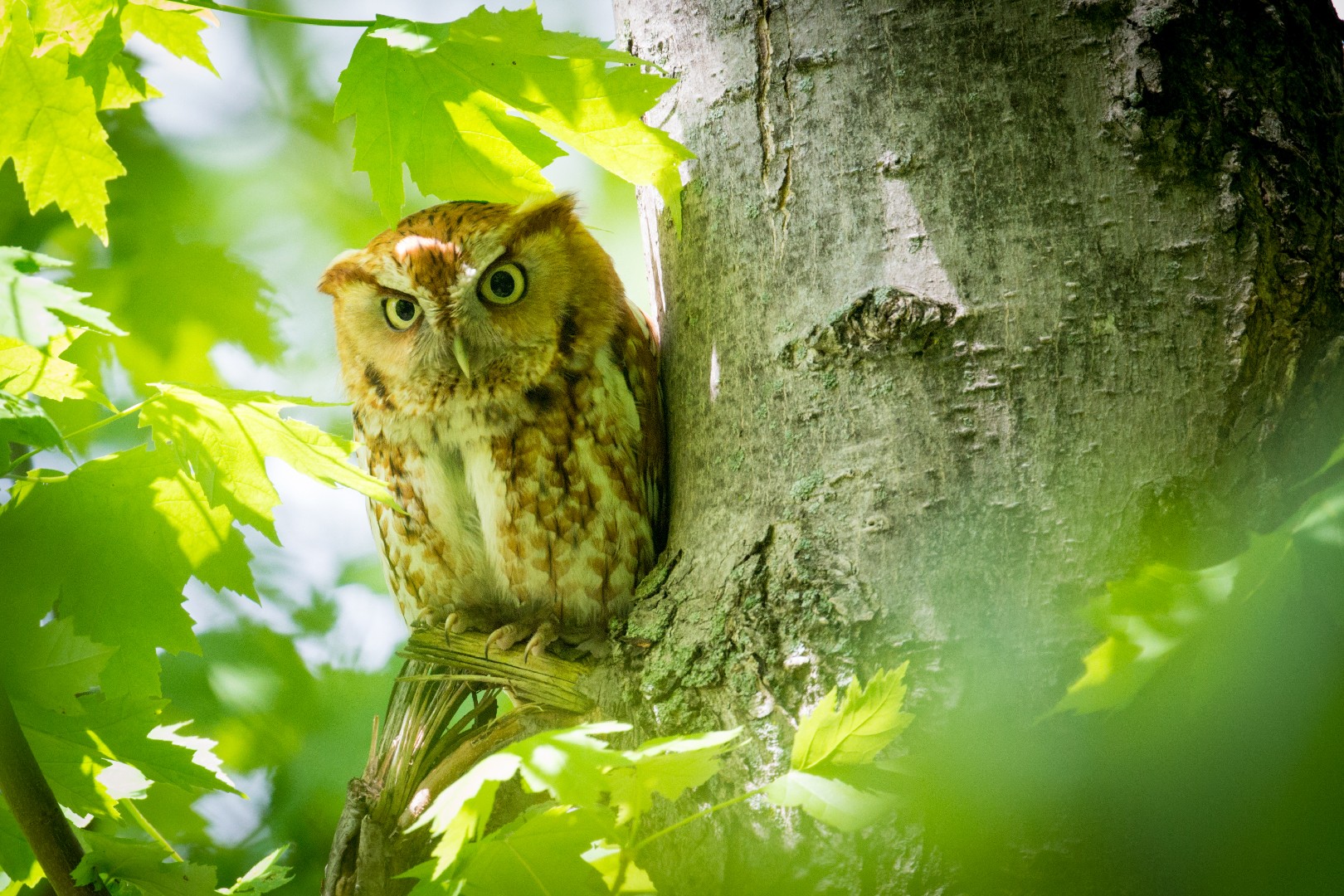Eastern Screech-owl
A species of Screech owls Scientific name : Megascops asio Genus : Screech owls
Eastern Screech-owl, A species of Screech owls
Botanical name: Megascops asio
Genus: Screech owls
Content
Description People often ask General Info
Description
The eastern Screech-owl has a distinctive silhouette to look out for, with pointed ear tufts that are typically raised, a short, stocky frame, and a big head with no discernible neck. This owl stays where trees can be found but doesn't shy away from human habitation—it has been known to take up residence in nest boxes set up in backyards.
Size
18 - 25 cm
Life Expectancy
14 years
Nest Placement
Cavity
Clutch Size
2 - 6 eggs
Incubation Period
1 brood
Number of Broods
27 - 34 days
Nestling Period
26 - 30 days
Feeding Habits
Eastern Screech-owl consumes a variety of small animals including mammals, birds, insects, earthworms, crayfish, amphibians, and lizards. Opportunistic hunters, they have a preference for large insects during breeding season and switch primarily to small mammals, especially meadow voles, in winter. They are known to store excess prey in tree holes.
Habitat
Eastern Screech-owl predominantly dwell in versatile environments such as mixed woodlands, deciduous forests, and wooded suburban regions. They favor areas with accessible tree cavities or nest boxes and prefer lighter understories. Habitually, these birds perch in natural or manmade cavities in proximity to streams, wetlands, and open fields, thriving at various altitudes and climates. Urban settings with sufficient tree cover, including parks, can also support eastern Screech-owl, suggesting adaptability. Eastern Screech-owl are resilient to habitat changes, provided that trees and suitable nesting sites are available.
Nest Behavior
Eastern Screech-owl does not construct nests but lays eggs in found cavities, with females creating a depression for the eggs, which she then incubates, with both parents assisting in rearing the young.
Nest Characteristics
Eastern Screech-owl utilizes existing cavities for nesting, often old woodpecker holes, tree crevices, or nest boxes, with no additional materials added, laying eggs on accumulated debris.
Dite type
Carnivorous
People often ask
General Info
Feeding Habits
Bird food type
Bird Feeder Type

Platform
Behavior
Eastern Screech-owl display nocturnal habits, with peak activity during twilight hours. They are adept perch hunters, swooping onto prey such as insects, small mammals, and even fish. Their flight path is notably U-shaped between perches. These owls form monogamous pairs or, rarely, one male pairs with two females. The male guards territory while the female cares for the young, who are dependent on their parents for 8–10 weeks post-fledging. Family units roost together, gradually disbanding as fledglings become independent.
Species Status
Not globally threatened.
Scientific Classification
Phylum
Chordates Class
Birds Order
Owls Family
True owls Genus
Screech owls Species
Eastern Screech-owl 